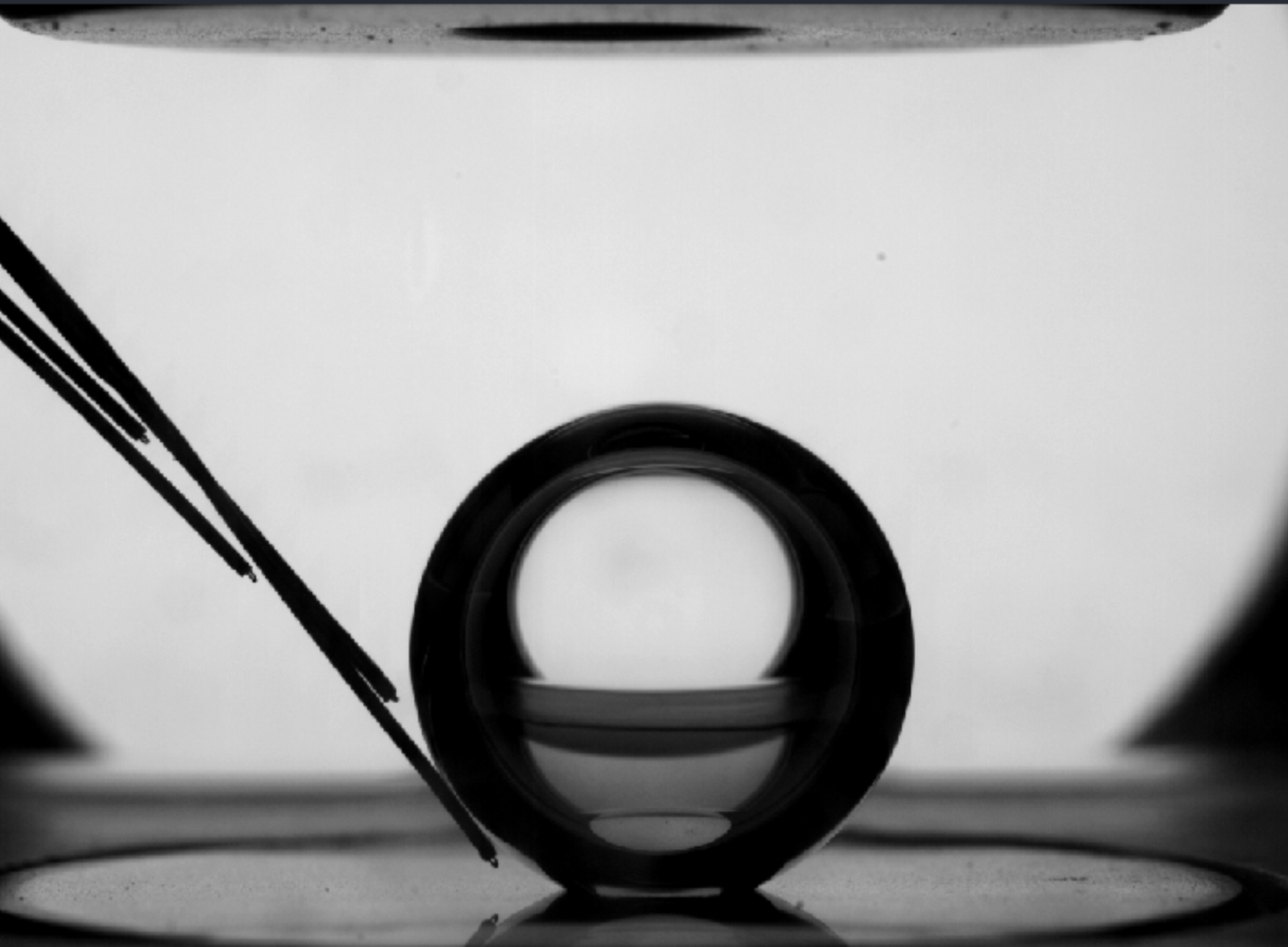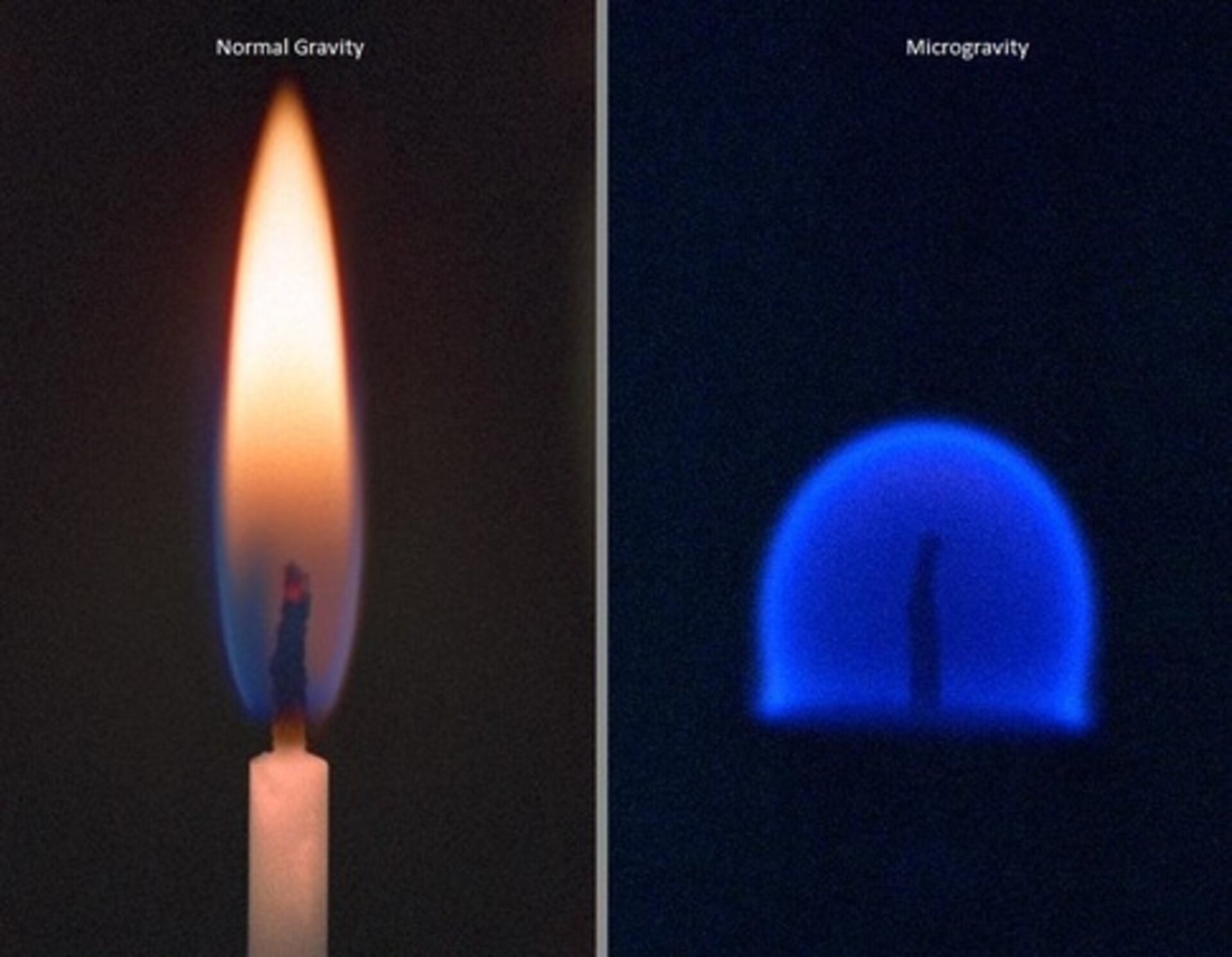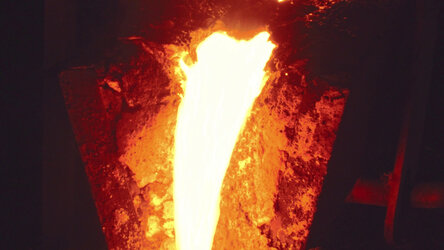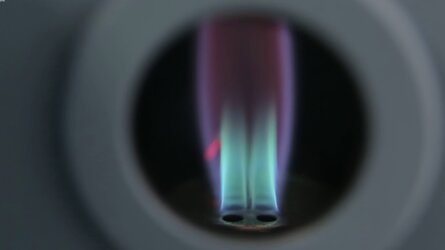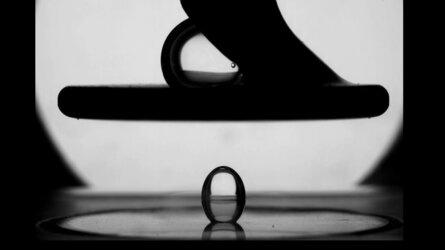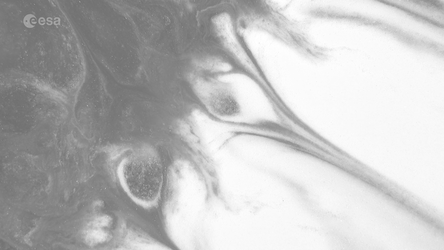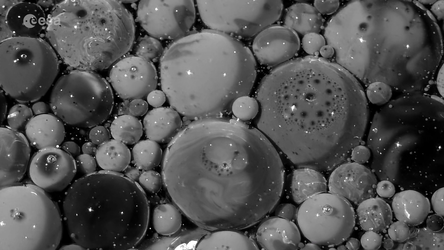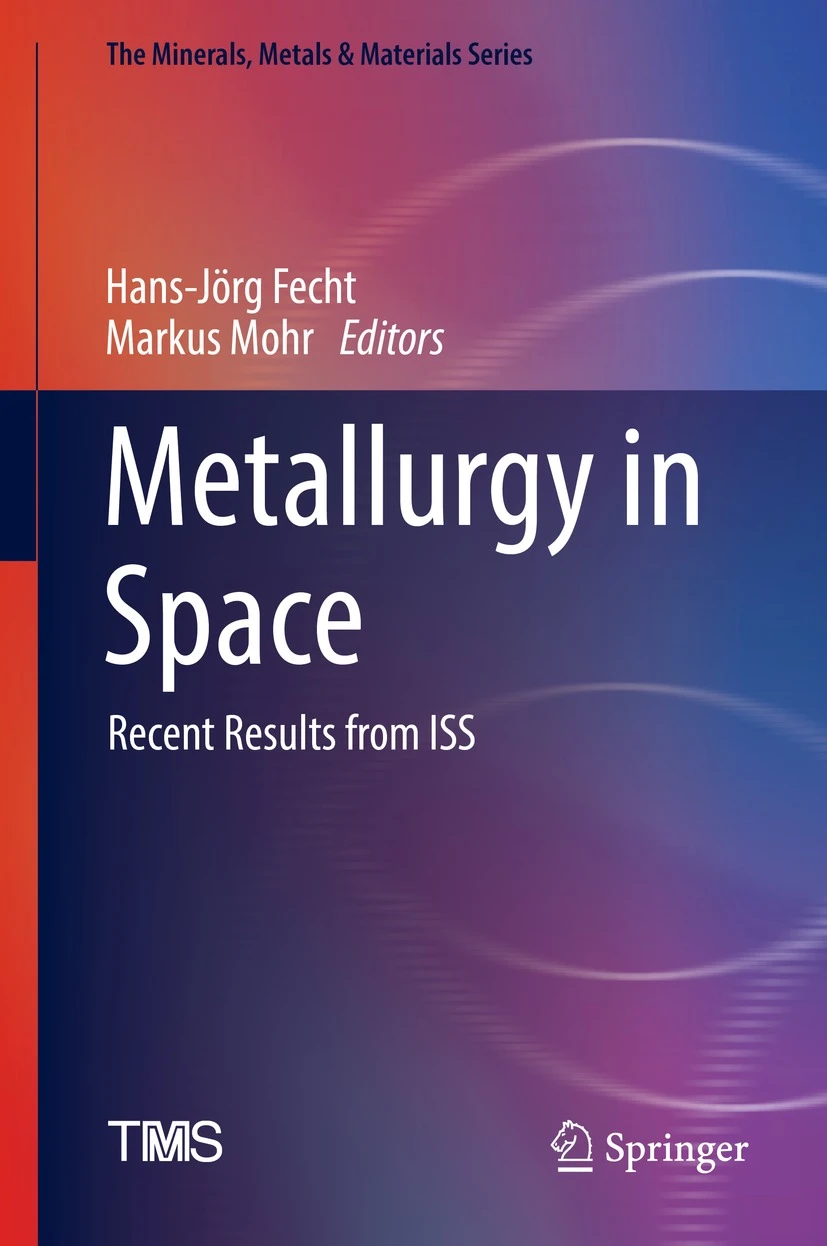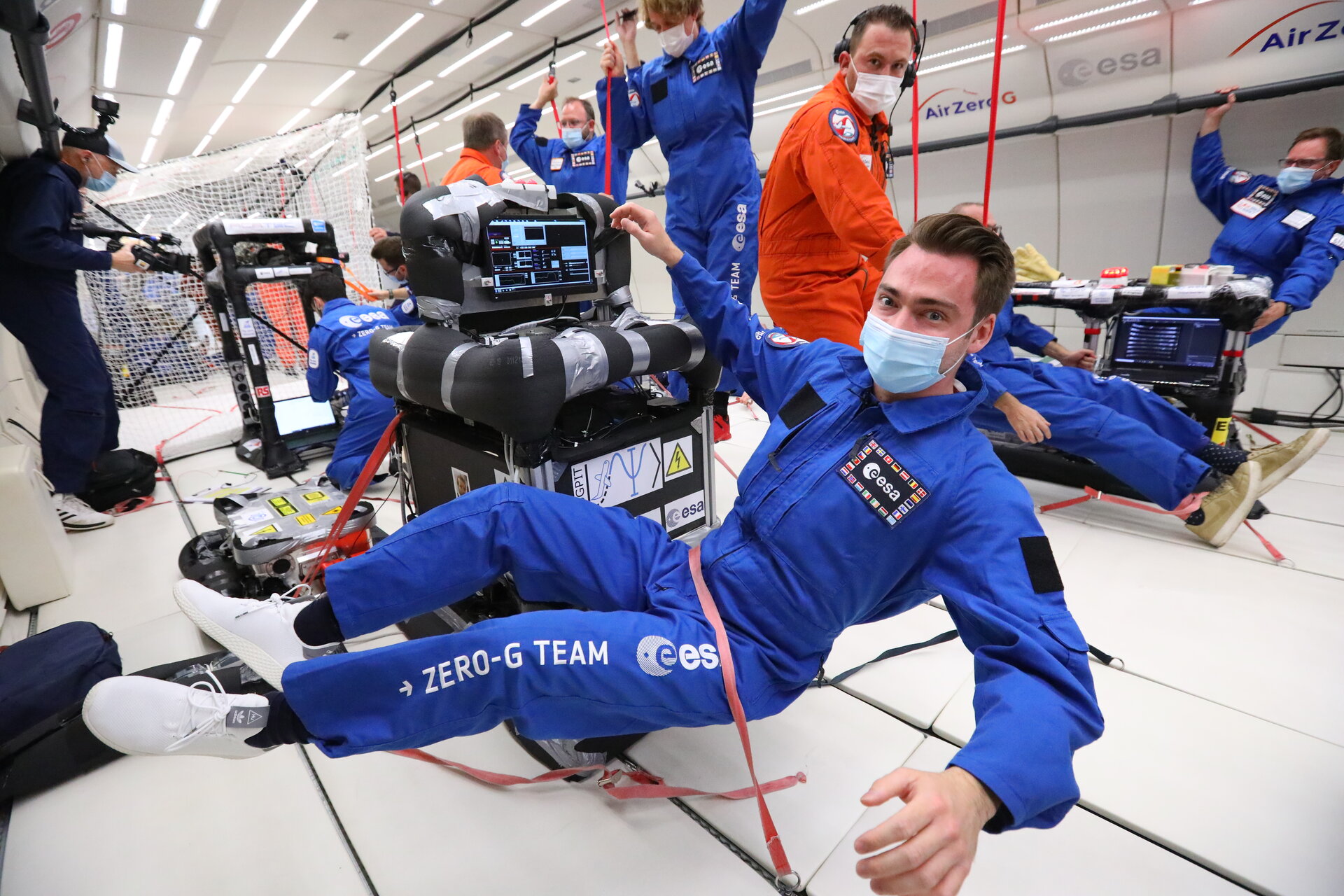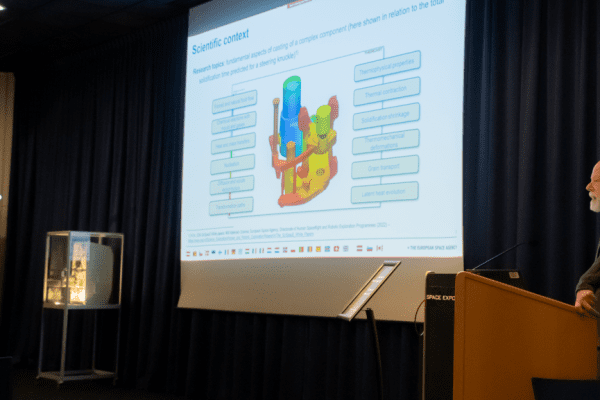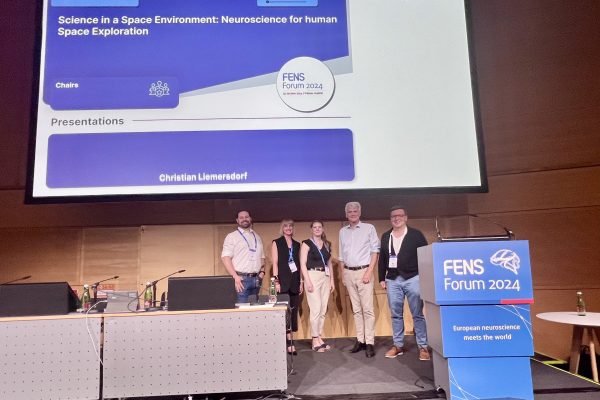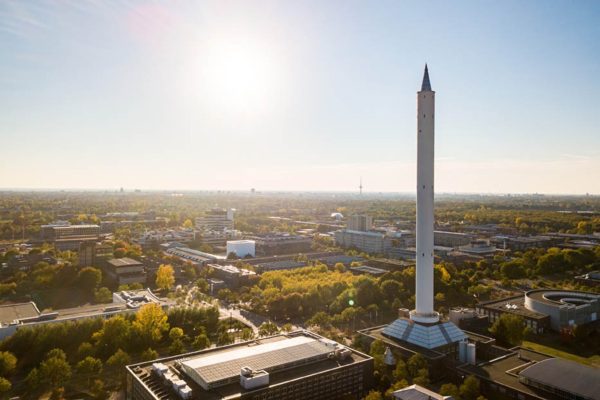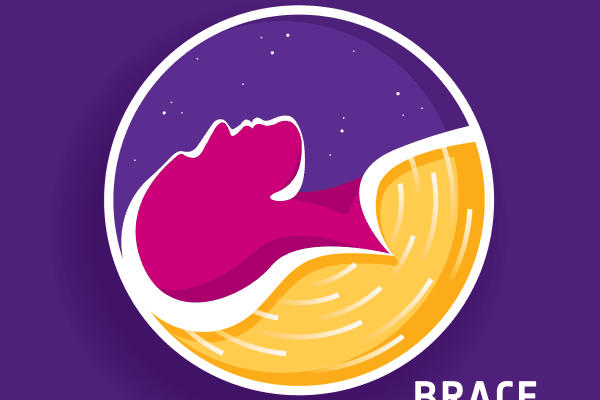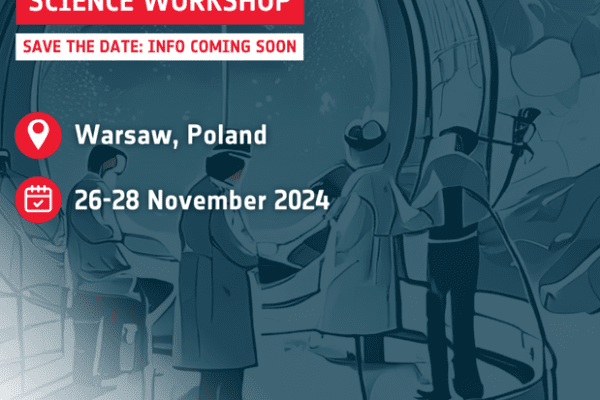Parabolic Flights
Parabolic flights are the only sub-orbital carriers allowing scientists to carry out, in person, biological, biomedical and physiological as well as physical and material science experiments under conditions of microgravity or other (reduced) gravity levels as self-standing experiments.
ESA provides scientists with an opportunity to conduct research necessary to advance knowledge relevant to the effects of space in the area of Life and Physical Sciences, with the overarching aim of contributing to safe and sustainable space exploration with human crews.
The ESA Parabolic Flight Campaigns take place with the Airbus A310 ZERO-G operated out of the Bordeaux-Mérignac airport by the company Novespace. Novespace’s A310 ZERO-G aircraft has been certified for flying parabolas that can provide reduced gravity levels between 0g and 1g (1g being Earth’s gravity).
ESA Parabolic flight campaigns are typically conducted twice per year in Spring and Autumn. Each flight campaign normally consists of three individual flights, each of which has 31 parabolas, i.e. a campaign has 93 parabolas in total. During each parabola, there is a period of increased gravity (1.8g), immediately prior to and following a period of reduced gravity.
Typically ESA Parabolic Flight campaigns focus solely on 0g, of which the Airbus A310 ZERO- G can produce about 20 seconds per parabola, giving a total of about 10 minutes of microgravity per flight, and 30 minutes per campaign. For other gravity levels in between 0g and 1g, the durations vary. Interested science teams are invited to specify in their proposal which g-level conditions (between 0g and 1g) they require to conduct their experiments, bearing in mind that campaigns focusing on intermediate gravity levels are very infrequent.
Current research opportunities
AO-2024-lunarPF
Deadline: October 11, 2024
Through this Announcement of Opportunity, ESA is soliciting for research experiments to be implemented during a lunar gravity Parabolic Flight campaign.
DLR-ESA Joint Announcement of Opportunity for Parabolic Flight Electro-Magnetic Levitation Experiments (AO-TEMPUS-2024)
Deadline: April 26, 2024
CORA Parabolic Flight
Deadline:
Through this Continuously Open Research Announcement, ESA provides scientists with an opportunity to fly their research on a Parabolic Flight.
